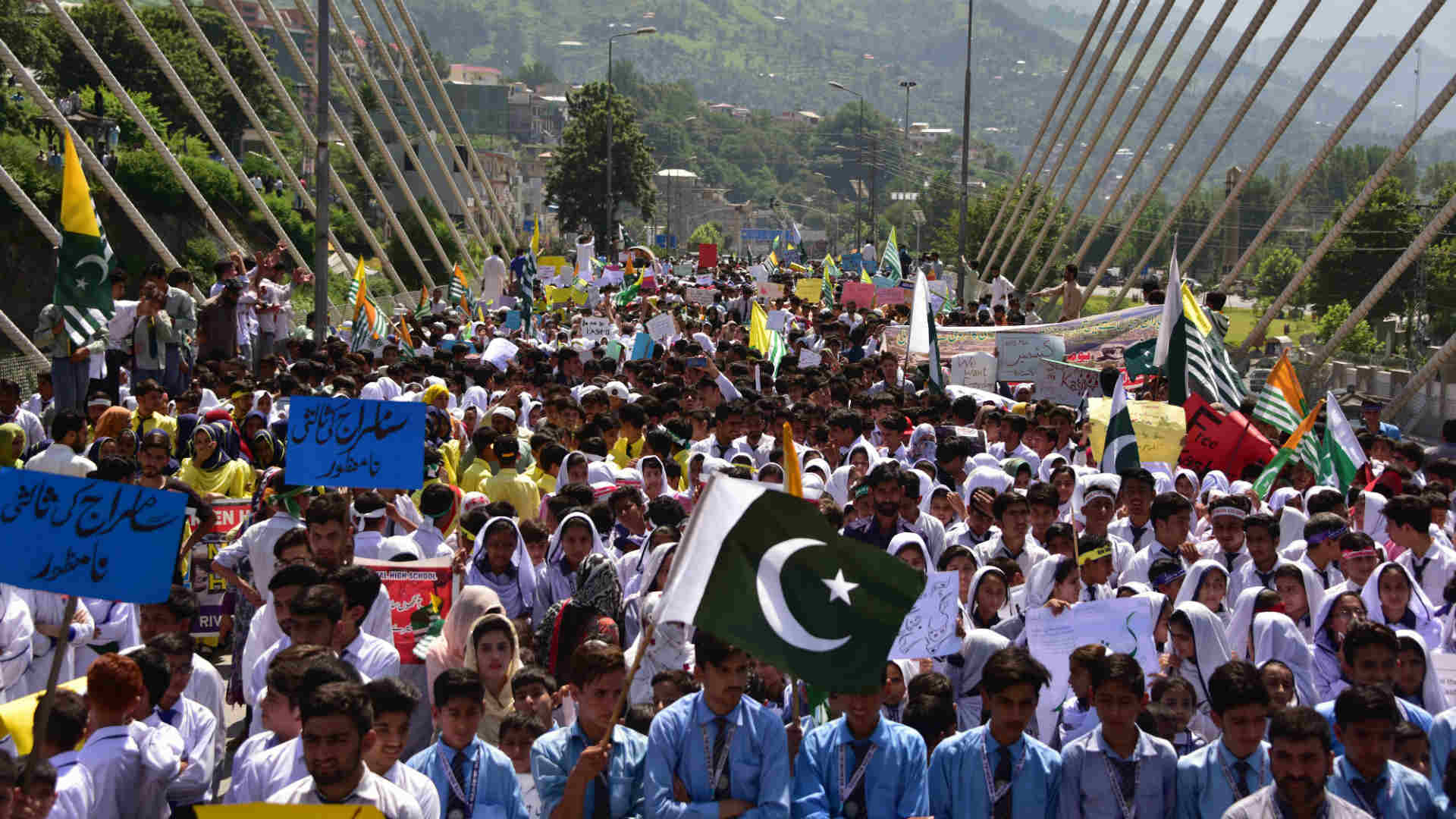The elusive “freedom” and “economic prosperity” of Azad Kashmir seems to have started evaporating into thin air as a powerful rights-movement has surfaced in a land which has remained mostly under the direct rule of Pakistani state ever since 1947.
The scenes of shutter down strikes across major cities of Azad Kashmir point towards the grim situation in the region. Kashmir interestingly holds a key position in the entire narrative of Pakistani establishment when it comes to defending the utilization of 60% of the Pakistan’s national budget (direct and indirect combined) for sustaining a security state. There have been three wars over the issue of Kashmir between India and Pakistan and both have gone nuclear in the name of defending their respective parts of the historic and scenic valley. This Kashmir valley also known as “Paradise-like” is also source of 80% of Pakistan’s water needs while serves for over 30% of India’s water needs including irrigation and hydro-power.
If Pakistan claims Kashmir as its “jugular vein” India calls it an “integral part”, yet isn’t it a point of concern that people of the valley under both the regimes continue to look for breathing space to enjoy universally accepted political freedoms. We will go into this comparison later in this article, but let’s focus on the current upheaval which has never been witnessed before in Azad Kashmir.
As part of their steady campaign in favour of their demands, including tax-free electricity, subsidised wheat flour, and abolition of the unwarranted perks and privileges of the political and bureaucratic elite, thousands flocked to the streets in different cities and towns of AJK on 5th of October 2023. The rallies and demonstrations were held amidst a complete strike in Muzaffarabad and Poonch divisions and partially in Mirpur division. A week earlier, rallies on same issues turned into clashes between the demonstrators and police that left many wounded in Muzaffarabad. However, this time around, all shops and businesses, including eateries, medical, fruit, and vegetable stores, remained closed. Even street vendors were nowhere to be seen. Public as well as private transport also remained off the roads, both in Muzaffarabad and Poonch divisions.
Apparently, public outrage has stemmed from a decision by the federal government to revise electricity tariff mechanism for AJK to impose regular tariffs and taxes without settling down the issue of paying royalty of Mangla Dam to the AJK government on account of constitutional and administrative ambiguities. Under Article 157 of the Constitution of Pakistan, share from net profit of hydel power income can only be given to the provinces and since AJK does not enjoy a provincial status as per the Constitution, it cannot enjoy the same privileges which Khyber Pakhtunkhwa enjoys through the royalty on Tarbela Dam proceeds from the federal government. Though government has announced the withdrawal of the proposal a crisis has already set in. “This uproar is neither instigated by some political ponies for setting a bargaining table with Rawalpindi or Islamabad, nor it’s a point-scoring game between two local Biradaris (clans). It is much deeper than this because young or elderly, PTI or PPP, men or women, traders or transporters, vendors or consumers, all are united on very basic economic and social issues,” observed a senior political analyst with over 30 years of experience of covering various movements in AJK.
Protestors had questions on basic yet important issues. An expert on economy, Khalid Latif noted that “years of underinvestment in key and life-line areas like agriculture, rural development and tourism have collectively created a crisis of unemployment and eventually an unrest in AJK.” He was of the view that middle and old men have been moving overseas to find employment, whereas women and young people of AJK were stuck back home without decent employment opportunities. This pool of people have now been joined by all those middle-aged men who have returned home as a result of dwindling overseas labour markets. This pool is estimated to be around 40% (though officially it is claimed under 12%). The neglect and underinvestment coupled with political problems placed on the general population is now having a devastating impact on the socioeconomic fabric of the society.
Officially, average per capita income reported for AJK is US$ 1512 while the reality hardly matches this administrative jugglery of figures because an average person hardly earns around 10,000 to 15,000 per month and has to feed an average family of 6. In the rest of AJK, especially in the northern part of Neelum valley and in the border areas, and the area near the Jhelum River and in districts like Bagh and Sudhnuti, access to cash income and development is very limited. A good part of these areas lacks proper road access and people have to travel long distances by foot and pay for transportation of goods. Among the poor, women are the most disadvantaged.
A recent survey report by the Freedom House “Freedom in the World 2023” has awarded Pakistani administered AJK the status of “Not Free” by giving 29 out of 100 points on account of lack of political and civil liberties. Out of 40 points to determine political liberties, AJK could muster only 9 while on account of 60 points to determine civil liberties, only 20 points were awarded to AJK.
Indian administered Kashmir is not better off either, if this survey is to be believed. The irony is that we do not learn from the history because those at the helm of affairs often believe that they can re-write the history, but as we have seen, those who wield power have not been able to continue their reign in the face of popular upheaval. One can only hope that recent events in AJK should help the civil and military establishments to be more sensitive to the public grievances.

